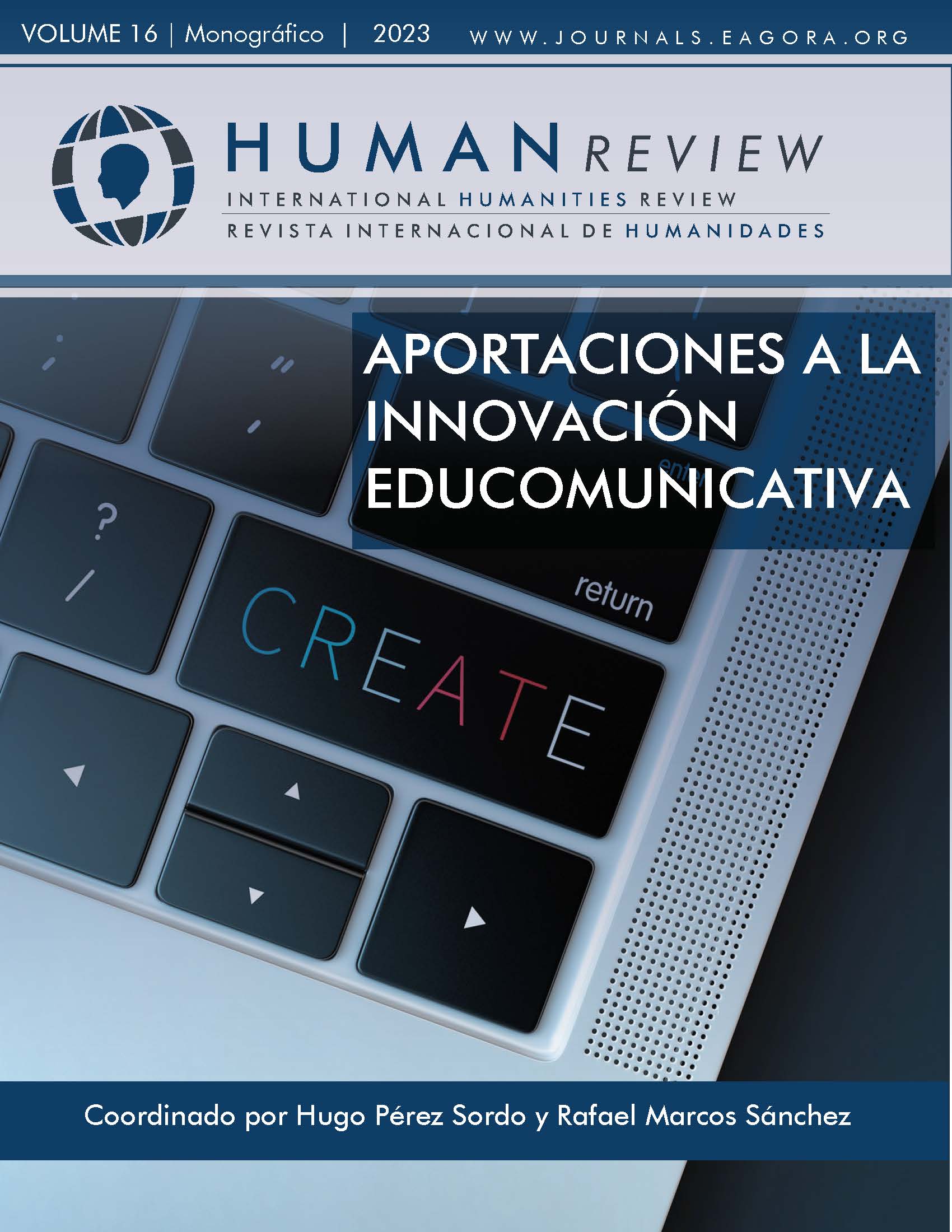Engineering education applications
Keywords:
Laboratory, Virtualization, Application, Transfers, Fluids, MATLAB, App DesignerAbstract
The applications developed to virtualize the laboratory of fluids and transfers of the Metropolitan University are presented. The aim was to allow students to perform laboratory practices online. An application of each practice was developed using MATLAB App Designer. The students were able to perform each virtual practice by manipulating the corresponding variables in real time and obtaining the results with which to make the reports. These applications were used to teach the course virtually, obtaining good acceptance by the students, who felt each practice was interactive and useful for their learning process.
References
Alim, N., Linda, W., Gunawan, F., & Saad, M. S. M. (2019). The effectiveness of Google Classroom as an instructional media: A case of State Islamic Institute of Kendari, Indonesia. Humanities & Social Sciences Reviews, 7(2), 240-246. https://doi.org/10.18510/hssr.2019.7227
Arufe Giráldez, V., Cachón Zagalaz, J., Zagalaz Sánchez, Mª. L., Sanmiguel-Rodríguez, A., & González-Valero, G. (2020). Equipamiento y uso de Tecnologías de la Información y Comunicación (TIC) en los hogares españoles durante el periodo de confinamiento. Asociación con los hábitos sociales, estilo de vida y actividad física de los niños menores de 12 años. Revista Latina de Comunicación Social, 78,183-204. https://doi.org/10.4185/RLCS-2020-1474
Contreras, R., Quintero, F., Rosales, S., & González, J. (2015). Desarrollo de un programa computacional en código abierto para determinar la distribución de diámetros de partículas en sistemas dispersos por medio del procesamiento de imágenes. Revista de la Facultad de Ingeniería Universidad Central de Venezuela, 30(3), 7-16.
Cuellar, J., & Pérez, M. (2005). Desarrollo de un programa de simulación en ingeniería de las reacciones químicas (ECM-035). X Congreso Latinoamericano de Transferencia de Materia y Calor, Caracas.
Dalgarno, B., Bishop, A. G., Adlong, W., & Bedgood, D. R. (2009). Effectiveness of a Virtual Laboratory as a preparatory resource for Distance Education chemistry students. Computers & Education, 53(3), 853-865. https://doi.org/10.1016/j.compedu.2009.05.005
de Sola Pueyo, J. & Ortiz Sobrino, M. Ángel. (2021). La utilización de las notificaciones de las aplicaciones móviles en los medios de comunicación españoles. Revista Latina De Comunicación Social, 79, 283-302. https://doi.org/10.4185/RLCS-2021-1516
Domínguez, J. C., Miranda, R., González, E. J., Oliet, M., & Alonso, M. V. (2018). A virtual lab as a complement to traditional hands-on labs: Characterization of an alkaline electrolyzer for hydrogen production. Education for Chemical Engineers, 23, 7-17. https://doi.org/10.1016/j.ece.2018.03.002
Ghosh, A., Nafalski, A., Nedic, Z., & Wibawa, A. P. (2019). Learning management systems with emphasis on the Moodle at UniSA. Bulletin of Social Informatics Theory and Application, 3(1), Art. 1. https://doi.org/10.31763/businta.v3i1.160
Gorai, P., Gao, D., Ortiz, B., Miller, S., Barnett, S. A., Mason, T., Lv, Q., Stevanović, V., & Toberer, E. S. (2016). TE Design Lab: A virtual laboratory for thermoelectric material design. Computational Materials Science, 112, 368-376. https://doi.org/10.1016/j.commatsci.2015.11.006
Ibrahem, U. M., Alsaif, B. S., Alblaihed, M., Ahmed, S. S. I., Alshrif, H. A., Abdulkader, R. A., & Diab, H. M. (2022). Interaction between cognitive styles and genders when using virtual laboratories and its influence on students of health college’s laboratory skills and cognitive load during the Corona pandemic. Heliyon, 8(4), e09213. https://doi.org/10.1016/j.heliyon.2022.e09213
Jia, R., Xu, S., Gao, S., Aziz, E.-S., Esche, S., & Chassapis, C. (2006). A Virtual Laboratory On Fluid Mechanics. 11.141.1-11.141.13. https://peer.asee.org/a-virtual-laboratory-on-fluid-mechanics
Juca, F. (2016). La educación a distancia, una necesidad para la formación de los profesionales. Revista Universidad y Sociedad, 8(1), 106-111.
Kapilan, N., Vidhya, P., & Xiao-Zhi Gao. (2021). Virtual Laboratory: A Boon to the Mechanical Engineering Education During Covid-19 Pandemic. Higher Education for the Future, 8(1), 31-46. https://doi.org/10.1177/23476311209707
Komulainen, T. M., Enemark-Rasmussen, R., Sin, G., Fletcher, J. P., & Cameron, D. (2012). Experiences on dynamic simulation software in chemical engineering education. Education for Chemical Engineers, 7(4), e153-e162. https://doi.org/10.1016/j.ece.2012.07.003
Omar, N., Zulkifli, R., & Hassan, R. (2009). Development of a Virtual Laboratory for Radiation Heat Transfer. European Journal of Scientific Research, 32.
Rafael, A. C., Bernardo, F., Ferreira, L. M., Rasteiro, M. G., & Teixeira, J. C. (2007). Virtual Applications Using a Web Platform to Teach Chemical Engineering: The Distillation Case. Education for Chemical Engineers, 2(1), 20-28. https://doi.org/10.1205/ece06007
Rahman, S., Tukur, N., & Khan, I. (2008). PC-Based Teaching Tools for Fluid Mechanics.
Ramírez, J., Soto, D., López, S., Akroyd, J., Nurkowski, D., Botero, M. L., Bianco, N., Brownbridge, G., Kraft, M., & Molina, A. (2020). A virtual laboratory to support chemical reaction engineering courses using real-life problems and industrial software. Education for Chemical Engineers, 33, 36-44. https://doi.org/10.1016/j.ece.2020.07.002
Rosales, S., Machín, I., Sánchez, M., Rivas, G., & Ruette, F. (2006). Theoretical modeling of molecular interactions of iron with asphaltenes from heavy crude oil. Journal of Molecular Catalysis A: Chemical, 246(1), 146-153. https://doi.org/10.1016/j.molcata.2005.10.027
Seifan, M., Dada, D., & Berenjian, A. (2019). The effect of virtual field trip as an introductory tool for an engineering real field trip. Education for Chemical Engineers, 27, 6-11. https://doi.org/10.1016/j.ece.2018.11.005
Seifan, M., Robertson, N., & Berenjian, A. (2020). Use of virtual learning to increase key laboratory skills and essential non-cognitive characteristics. Education for Chemical Engineers, 33, 66-75. https://doi.org/10.1016/j.ece.2020.07.006
Sivapragasam, C., Archana, B., Rithuchristy, G. C., Aswitha, A., Vanitha, S., & Saravanan, P. (2020). Developing Virtual Labs in Fluid Mechanics with UG Students’ Involvement. En M. E. Auer & K. Ram B. (Eds.), Cyber-physical Systems and Digital Twins (pp. 733-741). Springer International Publishing. https://doi.org/10.1007/978-3-030-23162-0_66
Urbina-Villalba, G. (2009). An algorithm for emulsion stability simulations: Account of flocculation, coalescence, surfactant adsorption and the process of Ostwald ripening. International Journal of Molecular Sciences, 10(3), 761-804. https://doi.org/10.3390/ijms10030761
Urbina-Villalba, G., & García-Sucre, M. (2000). Brownian Dynamics Simulation of Emulsion Stability. Langmuir, 16(21), 7975-7985. https://doi.org/10.1021/la000405x

